News Articles
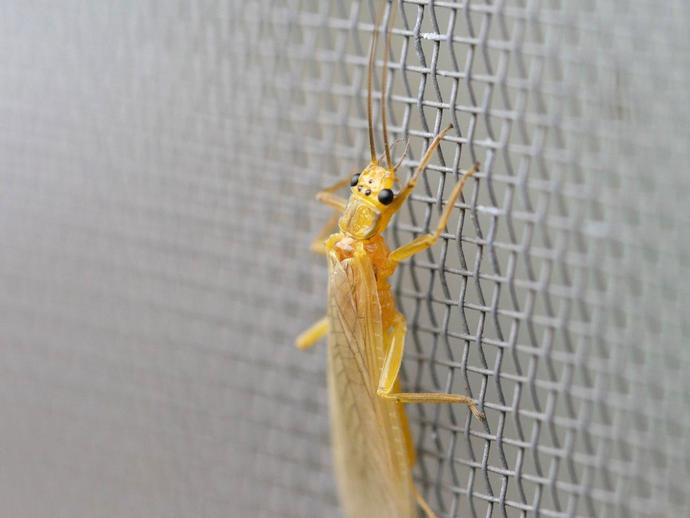
If you're a trout fisherman, this little fellow will probably look familiar
May 31, 2020
If you're a trout fisherman, this little fellow will probably look familiar. According to VMNH Executive Director Dr. Joe Keiper, this is a green stonefly from the family Chloroperlidae. Stoneflies belong to the order Plecoptera, which contains about 3,500 species. They're believed to be one of the most primitive winged insects. Stoneflies spend the early part of their life as aquatic nymphs, and they are highly sensitive to water pollution. If you find adult stoneflies near your house, you can rest assured that your local streams are healthy. They aren't strong fliers so the adults generally stick pretty close to the stream where they grew up. They spend one to four years as aquatic nymphs, but once they become adults, ...
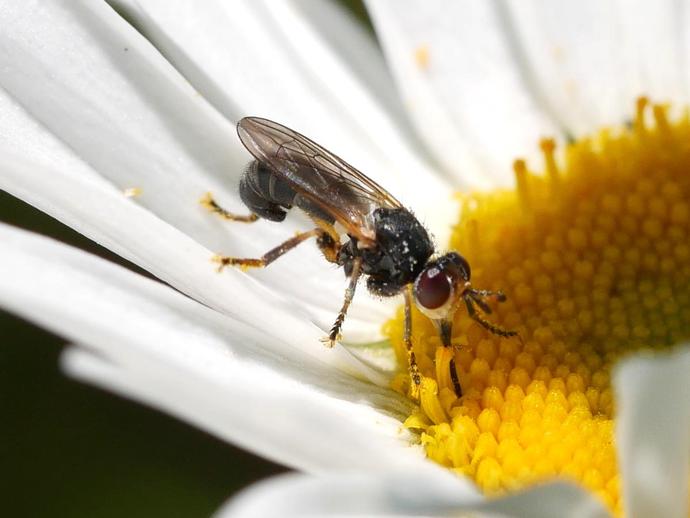
We generally think of flies as being attracted to gross stuff, but that isn't always the case
May 30, 2020
We generally think of flies as being attracted to gross stuff, but that isn't always the case. According to VMNH Executive Director Dr. Joe Keiper, this fly belongs to the family Conopidae and is likely a member of the genus Zodion. This family is commonly referred to as the "thick-headed flies" (which seems a little mean). There are about 800 species within this family, and many of them are mimics that resemble wasps or bees. There are a couple of things that all members of Conopidae have in common. For one, they like to visit flowers to lap up the sweet nectar, just like the pictured fly is doing. Two, their larvae are all internal parasites, usually on bees and wasps! When it comes time to lay eggs, the female fly will ...
Museum Educator Terri Robertson ...
May 29, 2020
Museum Educator Terri Robertson, along with the help of her niece, Kylee, demonstrate how to make elephant tootpaste from the comfort of your own home!
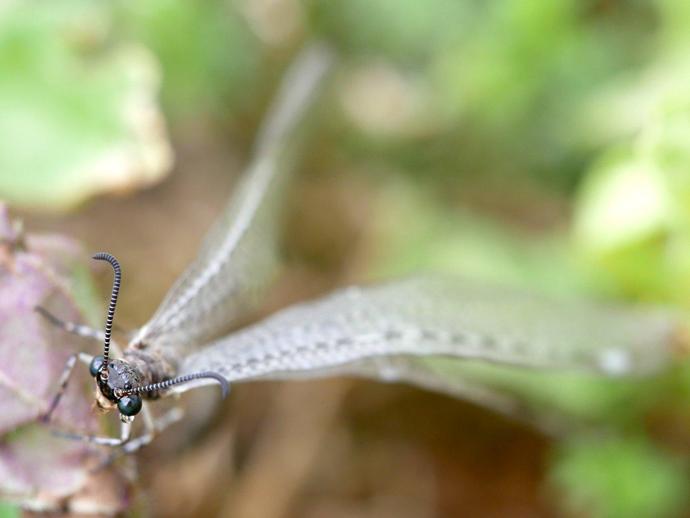
Yesterday we looked at the larval antlion (family Myrmeleontidae) ...
May 29, 2020
Yesterday we looked at the larval antlion (family Myrmeleontidae), often referred to as the "doodlebug," which makes its home at the bottom of a sandy pit and devours any unfortunate critters that fall inside. Today we're looking at the adult form of the antlion, which looks a little bit different than you might expect! When I found this adult antlion in my yard recently, I thought it was a damselfly; damselflies look similar to dragonflies, but they're generally smaller, skinnier, and fold their wings along their body when they're at rest instead of holding them straight out from their body. I was thrown by the fact that damselflies don't have prominent antennae, but this critter clearly does. I finally figured out (with ...
Dr
May 28, 2020
Dr. Adam Pritchard, assistant curator of paleontology at the Virginia Museum of Natural History, lists his top 10 giant dinosaurs of all time! Do you have your own list of top giant dinosaurs? Be sure to let Adam know in the comment section! #TalesOfAncientLife Fossil ID's If you think you've found a fossil and would like to get it checked out by Dr. Pritchard or other museum scientists and staff, please go to the VMNH contact form located on the official VMNH website at https://www.vmnh.net/forms/contact and we'll get you in touch with the right person!
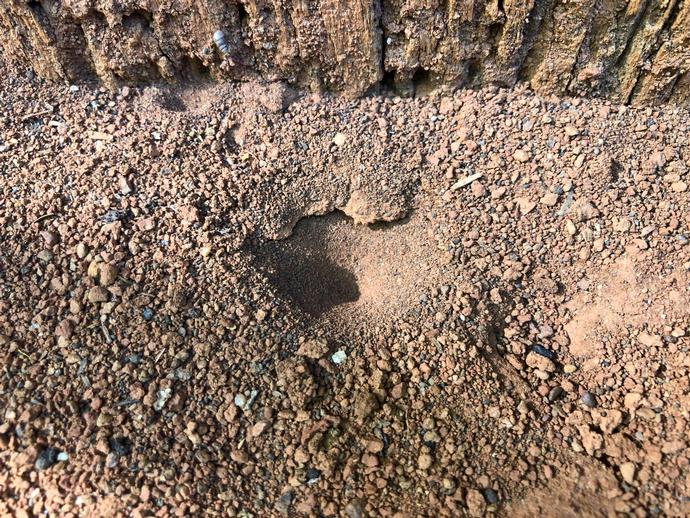
You've probably walked through an area with loose ...
May 28, 2020
You've probably walked through an area with loose, sandy soil and noticed a strange little pit in the ground. Most folks refer to these as "doodlebugs," but the critter at the bottom of that little pit is a bit fiercer than that name would suggest. These pits are created by the larvae of antlions, a group of about 2,000 species belonging to the family Myrmeleontidae. Some species of antlion larvae live in leaf litter, but the "doodlebug" variety digs pits in the sand. The larva lies in wait at the bottom of the pit, concealed by the sandy soil. When an insect -- often an ant -- falls into the pit, the antlion larva will spring into action. If the prey slides all the way to the bottom of the pit, the antlion will grab it ...

This approximately 5 foot Eastern Ratsnake (Pantherophis alleghaniensis) was seen today by ...
May 27, 2020
This approximately 5 foot Eastern Ratsnake (Pantherophis alleghaniensis) was seen today by Associate Curator of Invertebrate Zoology Dr. Kal Ivanov in Price, North Carolina only a couple of miles south of the Virginia border (see photo of yardstick for a comparison of size). This beautiful colubrid is one of few 6+ foot snake species to occur in the Commonwealth. According to the Virginia Herpetological Society's website (https://www.virginiaherpetologicalsociety.com/reptiles/snakes/eastern-ratsnake/blackrat_snake.php), the largest specimen known from the state measured 79.8 inches. This harmless snake is an excellent climber and one of Virginia's most commonly seen snakes. Thank you Bonnie and Lynn for your thoughtful ...
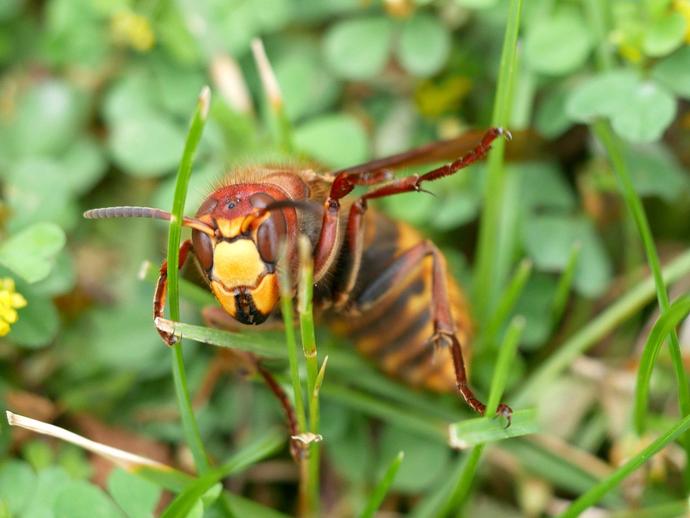
The European hornet (Vespa crabro) is one of the larger hornets that you're likely to find in ...
May 27, 2020
The European hornet (Vespa crabro) is one of the larger hornets that you're likely to find in Virginia, and I'd wager a whole lot of them have been squished over the last month or so due to their resemblance to the Asian giant hornet (Vespa mandarinia). While you're probably getting tired of hearing me say it, the Asian giant hornet (the so-called "murder hornet") is not in Virginia, and the only evidence that it's in the U.S. at all is two dead specimens found in Washington state back in December. Of course, both species are related since they're both members of the genus Vespa, also known as the "true hornets." The European hornet is the only member of this genus established in North America, and as its name suggests, ...
Prepping Insects for Museum Collections with Dr
May 26, 2020
Prepping Insects for Museum Collections with Dr. Kal Ivanov, Associate Curator of Invertebrate Zoology
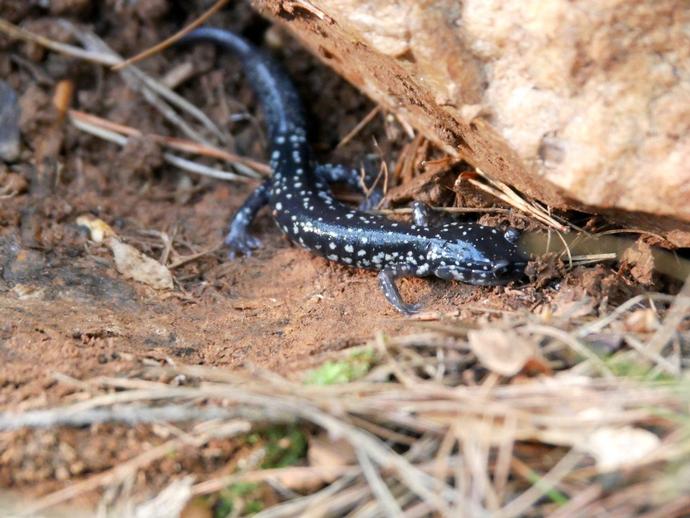
The white-spotted slimy salamander (Plethodon cylindraceus) is one of Virginia's more common ...
May 26, 2020
The white-spotted slimy salamander (Plethodon cylindraceus) is one of Virginia's more common salamanders, and it can be found throughout the Piedmont all the way down to the northern part of South Carolina. I've probably found at least 20 of these little guys in the woods around my house over the last few months, usually hiding beneath rocks. Generally speaking, you should never touch a salamander because they have very absorbent skin; many salamanders respire (breathe) through their skin. The salts and oils on our hands (not to mention perfumes, colognes, bug sprays, etc.) are quickly absorbed by salamanders, which is obviously bad for their health. However, there's another reason that you don't want to touch a ...
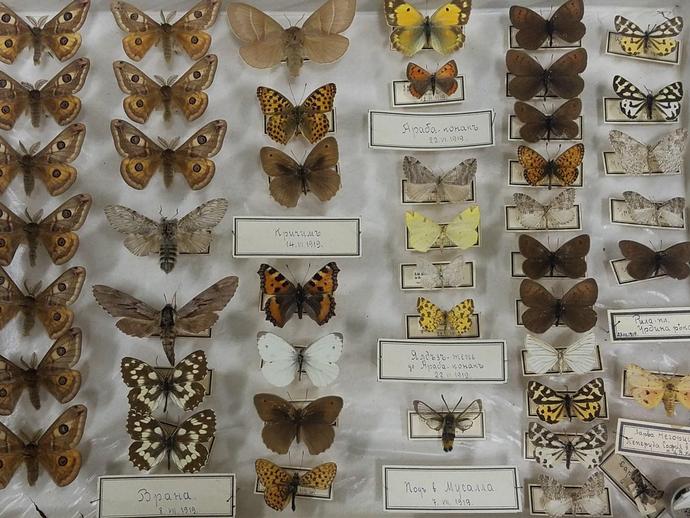
Join VMNH Invertebrate Zoologist Dr
May 26, 2020
Join VMNH Invertebrate Zoologist Dr. Kal Ivanov live at 2 p.m. today on the VMNH Facebook page!
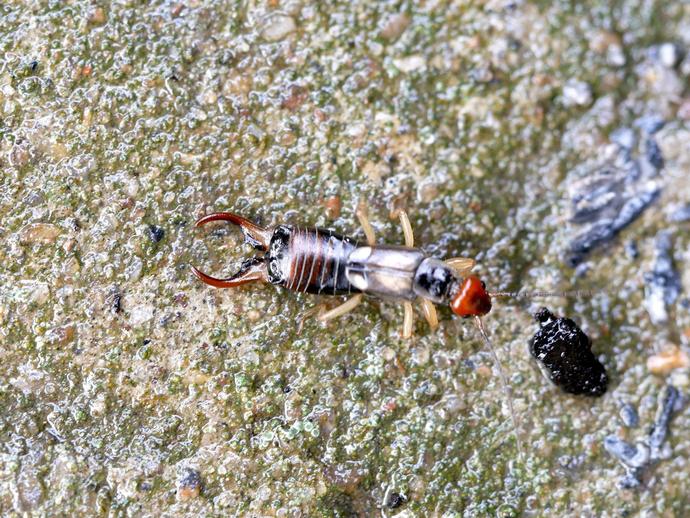
Who doesn't love earwigs?
May 25, 2020
Who doesn't love earwigs? ... all right, so very few people love earwigs, but they're victims of bad PR. For example, earwigs have no special interest in crawling inside your ear, and contrary to many old wives' tales, they definitely won't lay eggs in there. They're actually called "earwigs" because when their small wings are unfolded, they sort of resemble a human ear! The most prominent feature of the earwig is the pincers extending from its abdomen. These pincers are an easy way to tell the difference between male and female earwigs: males have prominent, curved pincers and females have straight pincers. While the males are capable of giving you a pinch with their pincers, they're not likely to do so unless you ...
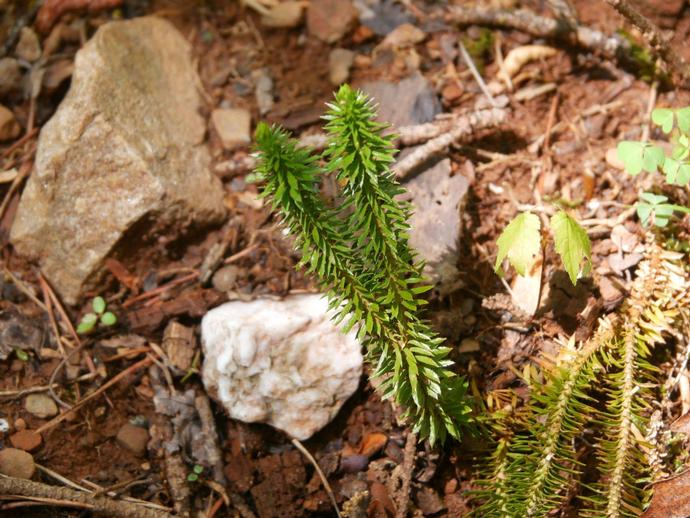
Awhile back ...
May 24, 2020
Awhile back, we posted Diphasiastrum digitatum, better known as ground cedar or running cedar, which is a plant belonging to the ancient family Lycopodiaceae. However, ground cedar isn't the only lycopod you're liable to find in the woods in southwest Virginia; you might also spot Huperzia lucidula, also known as shining firmoss or shining clubmoss. Lycopods date back to the early Devonian, about 380 million years ago, and they're unusual in that they do not produce flowers or seeds; instead they produce spores, sort of like a fungus! Huperzia lucidula ranges from Canada down to North Carolina and can be found in bogs and stream edges, on hillsides, and in forests with rich, acidic soil. It releases its spores in the ...
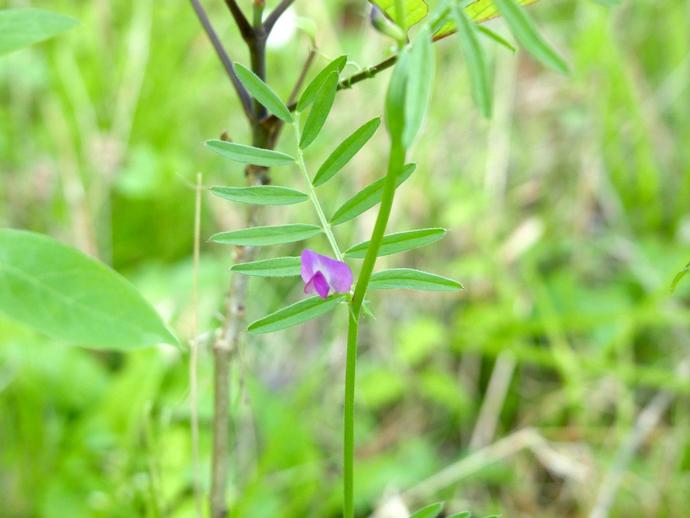
If you've walked through any fields lately ...
May 23, 2020
If you've walked through any fields lately, you've almost certainly seen this plant and its small violet flowers. This is common vetch (Vicia sativa), which belongs to the legume family (Fabaceae) alongside peanuts, soybeans, peas and many others. People often grow common vetch as a livestock fodder, and horses and cattle prefer it over grasses or clover. Livestock aren't the only ones to get in on the action; humans can eat common vetch, too! The young shoots can be cooked and taste a bit like spinach or collard greens, and the seeds inside the seed pods can be eaten fresh like peas, left to dry on the vine and used like dry beans, or even dried and ground into a type of flour! #BenInNature About this post: Social ...

For all you #BenInNature fans living in the Roanoke region, be sure to catch today's 5 p
May 22, 2020
For all you #BenInNature fans living in the Roanoke region, be sure to catch today's 5 p.m. newscast on WDBJ7 (CBS affiliate) for a quick, special interview with VMNH Administrator of Science Ben Williams!
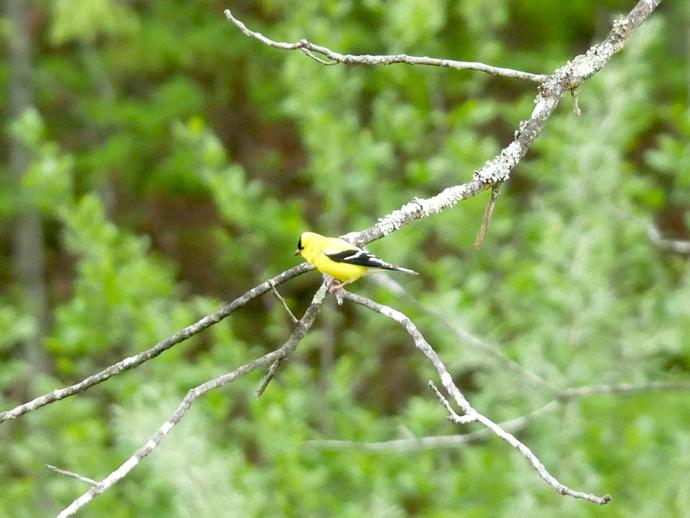
The American goldfinch (Spinus tristis) is always a welcome sight at the birdfeeder
May 22, 2020
The American goldfinch (Spinus tristis) is always a welcome sight at the birdfeeder. Both of the goldfinches pictured here are males, as they have vibrant yellow feathers and a black cap; the females are a duller yellowish-brown color and lack the black cap. American goldfinches are migratory birds, and during their breeding season, they can be found from North Carolina all the way up to Canada. During the winter, the birds at the northernmost part of the range will migrate south of the U.S./Canadian border and can be found as far south as Mexico. Because of this overlap in range, some of the more southerly populations of goldfinches don't migrate at all but are year-round residents. The American goldfinch is the only ...
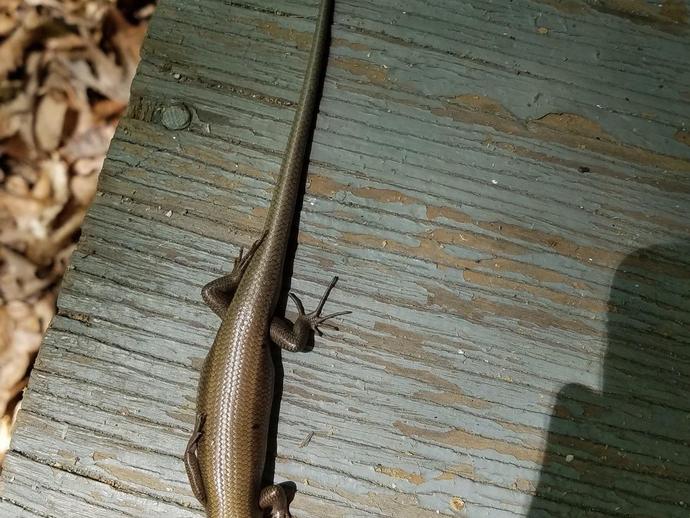
Longtime VMNH friend and supporter Virginia King recently sent us this photo of a male ...
May 22, 2020
Longtime VMNH friend and supporter Virginia King recently sent us this photo of a male five-lined skink! According to reptile expert Jason Gibson, this skink is either Plestiodon fasciatus, the five-lined skink, or Plestiodon inexpectatus, the southeastern five-lined skink; it's sometimes difficult to tell the difference in photos. Once five-lined skinks reach maturity, it's easy to tell the difference between males and females. Females and juvenile skinks are black with bright blue tails, and they have five thin yellow lines running down their backs. On the other hand, once males reach adulthood, their stripes begin to fade; older males like the one pictured turn a uniform olive brown color. During the breeding season, ...
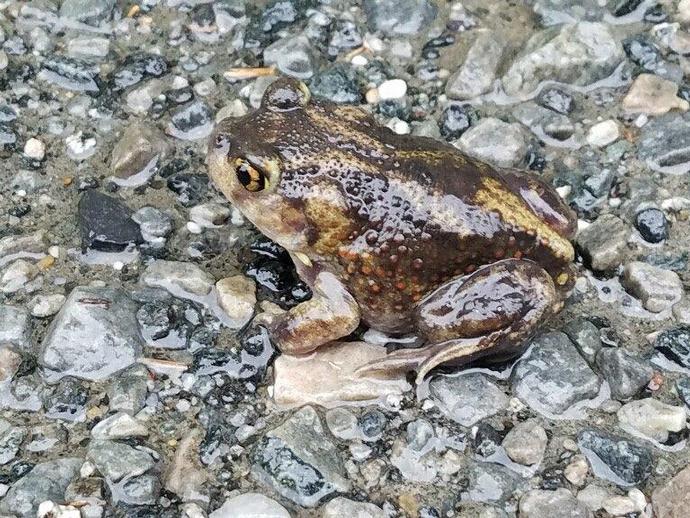
If you decide to brave the current weather conditions and venture outside ...
May 21, 2020
If you decide to brave the current weather conditions and venture outside, you might be in for a treat and come across some unusual species, such as this eastern spadefoot (Scaphiopus holbrookii) seen today at Mayo River State Park in North Carolina by Associate Curator of Recent Invertebrates Dr. Kal Ivanov. This species might be locally abundant, but it is seldom seen, as it spends most of its life underground. It may appear in large numbers after heavy rains to take advantage of the shallow temporary ponds where it breeds.
Though Dr
May 21, 2020
Though Dr. Pritchard is a vertebrate paleontologist by training, the museum's paleontology collections consist of more than just specimens of animals with backbones. In fact, the paleontology collections consist of hundreds of thousands of invertebrate specimens (animals without a backbone) that are every bit as critical in telling the story of Virginia's ancient past. In this episode, Dr. Pritchard tells the story of Chesapecten, an extinct genus of scallop that flourished off the coast of what we now know as Virginia approximately 10 million and 5 million years ago. In fact, the species Chesapecten jeffersonius - which is named after the famed Thomas Jefferson - is the official state fossil of Virginia! ...
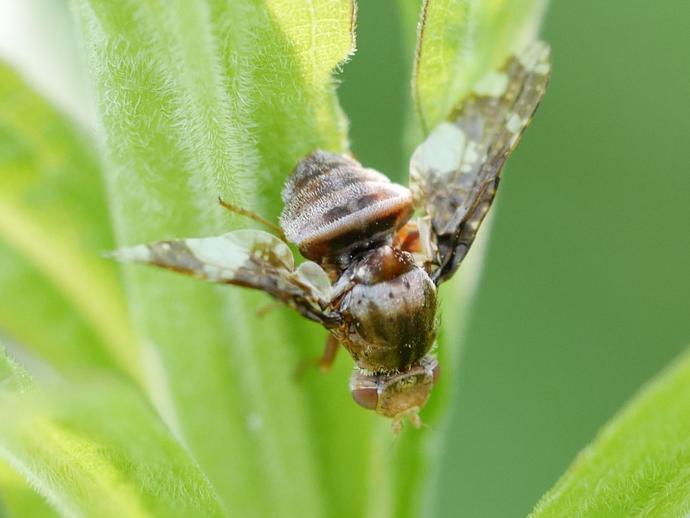
Pop quiz: What does the goldenrod gall fly (Eurosta solidaginis) have in common with your car?
May 21, 2020
Pop quiz: What does the goldenrod gall fly (Eurosta solidaginis) have in common with your car? The answer: They both contain antifreeze! (Also, I guess they both have at least one antenna.) These small flies can be found across the U.S., generally in the vicinity of goldenrod plants. They lay their eggs near the new buds of a goldenrod, and when the eggs hatch, the larvae crawl below the bud and induce the plant to form a gall (a hard chamber made of plant tissue) around themselves. They stay inside the gall until they emerge in the spring as adults. However, the gall doesn't offer much in the way of insulation for the soft-bodied larvae, and they sometimes have to endure long, hard winters. Just how they accomplish that ...
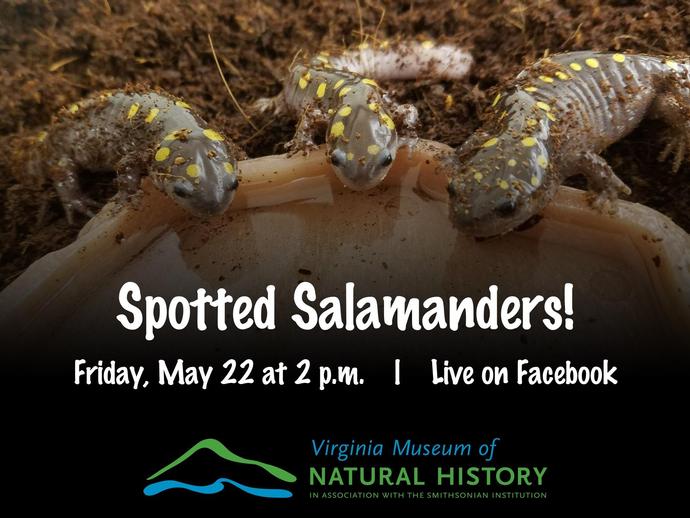
Join Museum Educator Kayla Lacy live on the VMNH Facebook page at 2 p
May 21, 2020
Join Museum Educator Kayla Lacy live on the VMNH Facebook page at 2 p.m. tomorrow, as she highlights the museum's resident spotted salamanders!
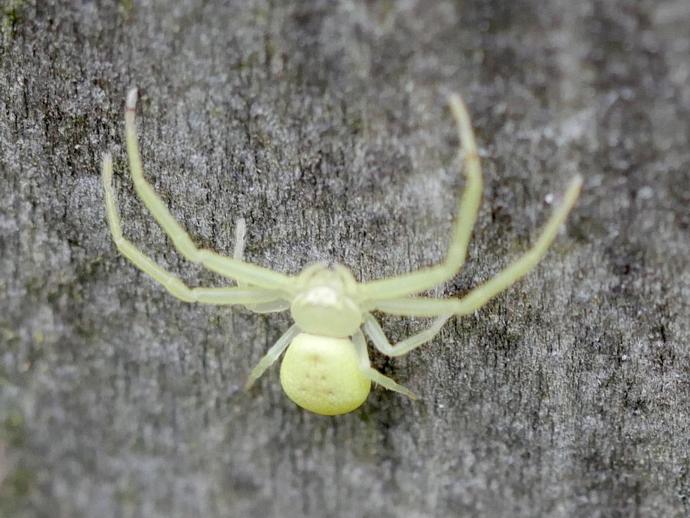
There are several animals famous for being able to change color ...
May 20, 2020
There are several animals famous for being able to change color, such as the chameleon or the octopus. Did you know that some spiders can change color, too? This is a small female Misumena vatia, commonly called the goldenrod crab spider. As the name suggests, these spiders commonly hunt for prey in sprays of goldenrod flowers. However, they're not exclusive to goldenrods, and sometimes they'll hunt on white flowers; depending on the flower, they can change color from yellow to white! Unlike a lot of animals that can change color (also known as "active camouflage"), this process isn't particularly rapid. It takes about 25 days for the spider to go from white to yellow, but it only takes about a week for it to change ...
Want to learn more about the secret, underground life of cicadas? Dr
May 20, 2020
Want to learn more about the secret, underground life of cicadas? Dr. Kal Ivanov, associate curator of invertebrate zoology, provides excellent insights in this article written by Holly Kozelsky of the Martinsville Bulletin.
"You see ...
May 20, 2020
"You see, for years, I've been hearing that periodical cicadas are not only edible, but are, in fact, delicious."
Museum Education Manager Christy Deatherage took to Facebook Live today to explore food web ...
May 19, 2020
Museum Education Manager Christy Deatherage took to Facebook Live today to explore food web basics and the connections between organisms and the environment! In this video, Christy discusses the predator-prey relationship, while dissecting owl pellets and explaining the basic principles of food webs. Additionally, Christy shows-off one of the museum's Great Horned Owl specimens to highlight their fascinating adaptations.
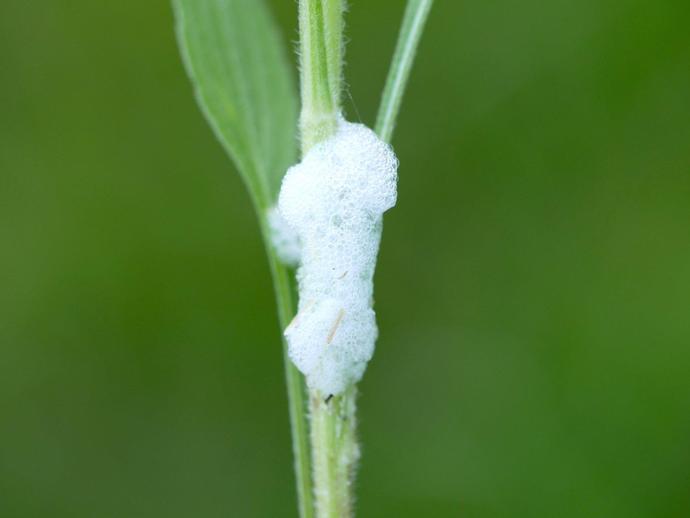
Have you ever been walking through tall grass and seen a mass of white foam clinging to a stalk?
May 19, 2020
Have you ever been walking through tall grass and seen a mass of white foam clinging to a stalk? That's the work of the spittle bug, an insect belonging to the superfamily Cercopoidea. The nymphs of this family have an unusual habit; while they're feeding on plant juices that flow up from the roots and through the plant's xylem, they excrete liquid and use special breathing tubes to inject bubbles into the fluid, forming a foamy mass around the insect. This foam has a variety of benefits. It conceals the nymph from predators (you'll note that I had to clear some of the foam away to take a photo of the nymph itself); it insulates the nymph from extreme temperatures; and it prevents the soft-bodied nymph from drying out. ...
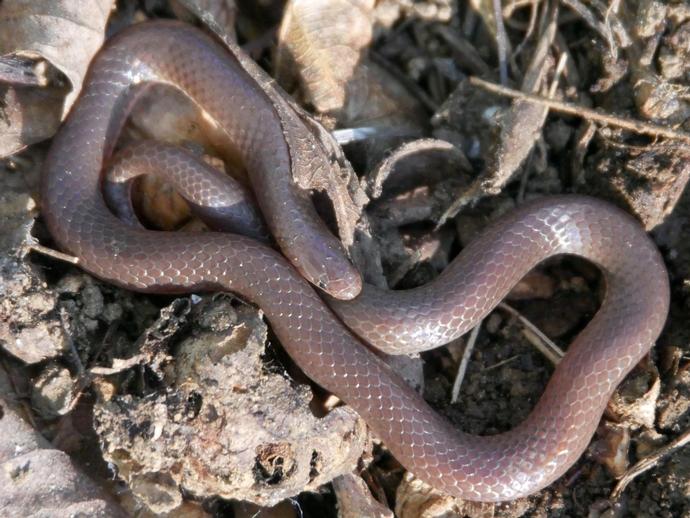
Pictured: Worm Snake Since we can't host this year's Reptile Festival at the museum ...
May 19, 2020
Pictured: Worm Snake Since we can't host this year's Reptile Festival at the museum, we're bringing this year's Reptile Festival to you! On Friday, June 12 and Saturday, June 13, the museum will be providing reptile-themed videos highlighting some of the most intriguing and inspiring animals that call Virginia (and elsewhere) home! All you have to do is keep an eye on the VMNH Facebook page to see these videos posted throughout the two days! From snakes to lizards to turtles, the museum's researchers, educators, and reptile experts from around the Commonwealth will be showing-off some of the unique creatures of the reptile world...even fossils of reptiles long extinct! Sad you'll miss-out on festival staples, such ...
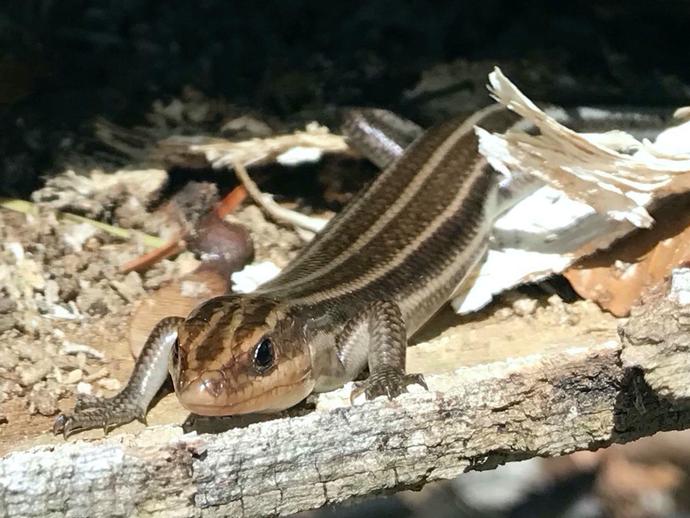
Pictured: Five-lined Skink Since we can't host this year's Reptile Festival at the museum ...
May 19, 2020
Pictured: Five-lined Skink Since we can't host this year's Reptile Festival at the museum, we're bringing this year's Reptile Festival to you! On Friday, June 12 and Saturday, June 13, the museum will be providing reptile-themed videos highlighting some of the most intriguing and inspiring animals that call Virginia (and elsewhere) home! All you have to do is keep an eye on the VMNH Facebook page to see these videos posted throughout the two days! From snakes to lizards to turtles, the museum's researchers, educators, and reptile experts from around the Commonwealth will be showing-off some of the unique creatures of the reptile world...even fossils of reptiles long extinct! Sad you'll miss-out on festival staples, ...
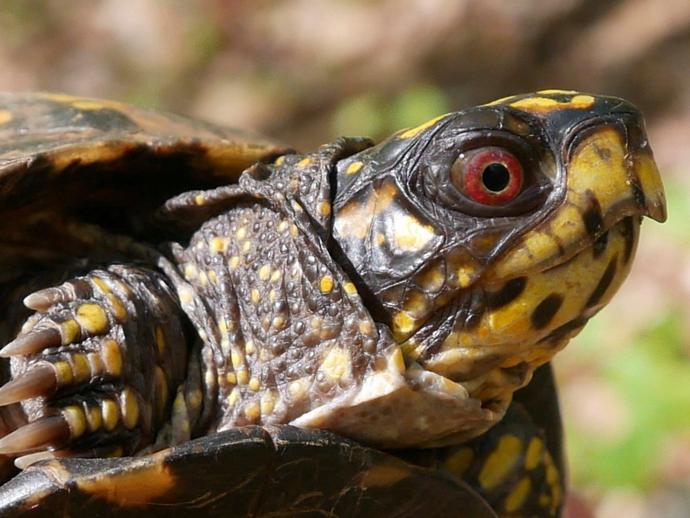
Pictured: Box Turtle Since we can't host this year's Reptile Festival at the museum ...
May 19, 2020
Pictured: Box Turtle Since we can't host this year's Reptile Festival at the museum, we're bringing this year's Reptile Festival to you! On Friday, June 12 and Saturday, June 13, the museum will be providing reptile-themed videos highlighting some of the most intriguing and inspiring animals that call Virginia (and elsewhere) home! All you have to do is keep an eye on the VMNH Facebook page to see these videos posted throughout the two days! From snakes to lizards to turtles, the museum's researchers, educators, and reptile experts from around the Commonwealth will be showing-off some of the unique creatures of the reptile world...even fossils of reptiles long extinct! Sad you'll miss-out on festival staples, such ...
FANTASTIC FOOD WEBS! Tuesday, May 19 at 3 p
May 18, 2020
FANTASTIC FOOD WEBS! Tuesday, May 19 at 3 p.m. Live on the VMNH Facebook Page Join Museum Education Manager Christy Deatherage live on Facebook to explore food web basics and the connections between organisms and the environment! During the program, audiences will join Christy in exploring the predator-prey relationship, as she dissects owl pellets and explains the basic principles of food webs. Additionally, Christy will be showing-off one of the museum's Great Horned Owl specimens to highlight their adaptations, as well as museum specimens that represent common prey for these animals. In the meantime, you can learn more about Great Horned Owls by visiting the Audubon's Guide to North American Birds linked here!

Periodical cicadas are beginning to emerge in Martinsville ...
May 18, 2020
Periodical cicadas are beginning to emerge in Martinsville, Henry County, and Patrick County (not to mention many other parts of southwest Virginia, West Virginia and North Carolina). If you'd like to learn more about these cool insects that are finally taking flight after spending 17 years underground, VMNH Administrator of Science Ben Williams has you covered! #BenInNature
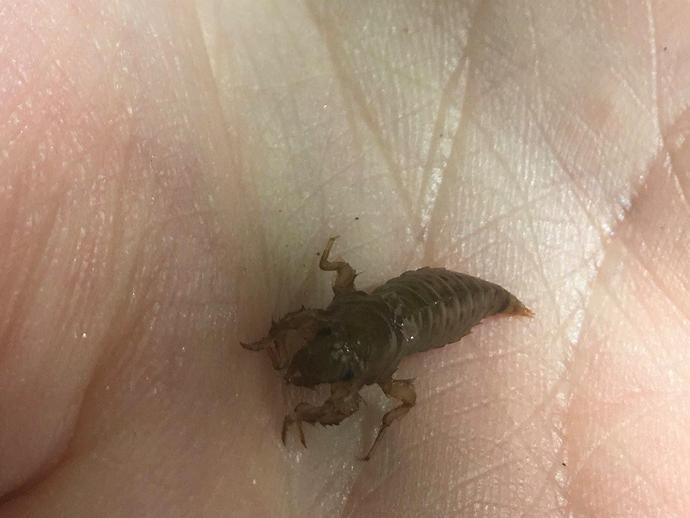
On Saturday ...
May 18, 2020
On Saturday, VMNH Paleontology Technician Lucy Treado and entomologist Aryanna James (former VMNH intern), explored Eggleston Falls and the Rhododendron Trail in Ridgeway, Virginia to collect some macroinvertebrates for the museum's Wild Watersheds exhibit. Perhaps tethering themselves to their pups was not the most effective collection method, nor the most conducive way to photograph the work outing, but they were successful in gathering a few specimens...and their dogs seemed pretty content! Spotting a few millipedes and spending a gorgeous day along the water were both added bonuses for a successful collection trip!
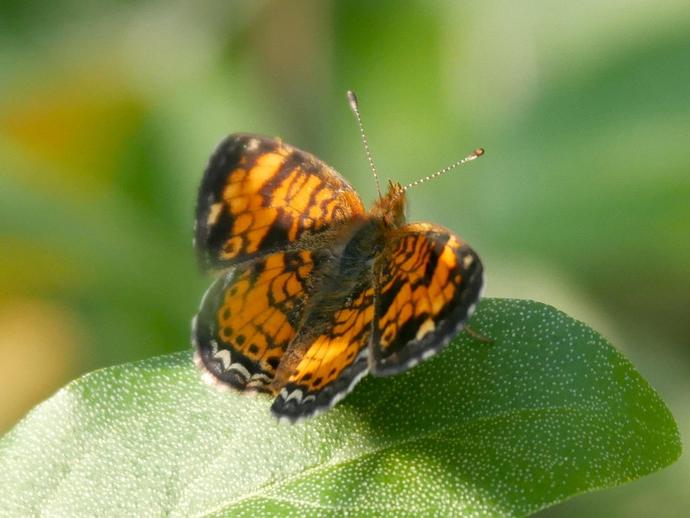
The pearl crescent butterfly (Phyciodes tharos) is one of the most widespread butterflies in ...
May 17, 2020
The pearl crescent butterfly (Phyciodes tharos) is one of the most widespread butterflies in North America. It can be found everywhere in the U.S. except for the west coast, and it can also be found throughout Mexico and in southern Canada. These little butterflies like to spend their time in open areas and can often be spotted in pastures, fields, open pine woods, and road edges. In the northern part of their range, they can usually be found from April through November, and they can be found year-round in the southern U.S. and Mexico. These butterflies tend to visit a wide variety of flowers; they aren't too picky, so keep an eye peeled when you're in your garden. Thank you to VMNH Associate Curator of Entomology Dr. Kal ...
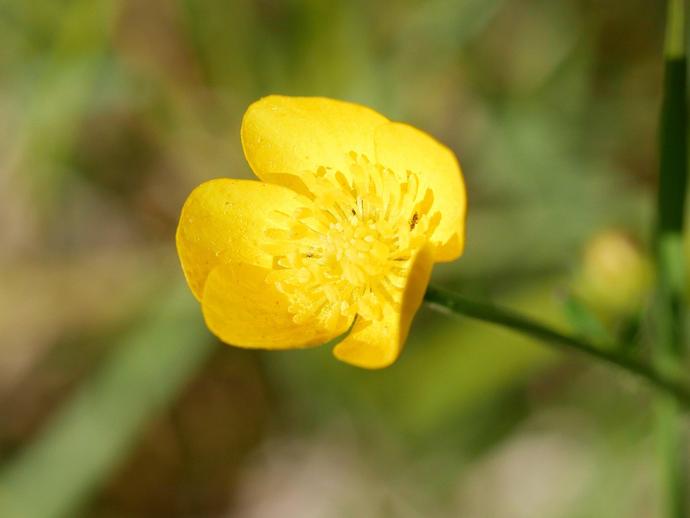
There are many different species of buttercups, all belonging to the genus Ranunculus
May 16, 2020
There are many different species of buttercups, all belonging to the genus Ranunculus. "Ranunculus" is Latin for "little frog," and it likely got its name because these plants tend to grow near water and in poorly-draining soil. Buttercups have a tendency to pop up in pastureland, which is potentially dangerous as all species within the genus are poisonous. Fortunately, livestock tend to avoid them unless they're truly desperate for food. Perhaps the neatest feature of the buttercup is that the flowers are highly reflective! The upper surface of the petal is incredibly smooth and almost acts as a mirror, which likely helps attract pollinating insects. When you were a child, there's a good chance someone held a ...
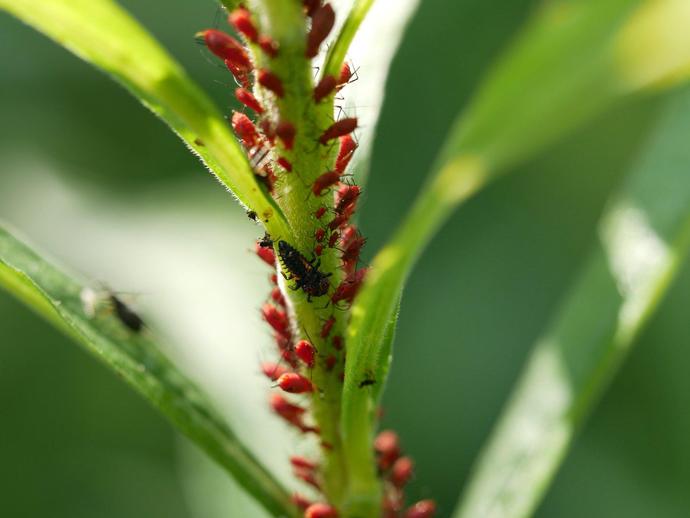
Welcome to the exciting conclusion to yesterday's nature post about ladybeetle larva!
May 15, 2020
Welcome to the exciting conclusion to yesterday's nature post about ladybeetle larva! If you missed that post, be sure to scroll down and check it out. If you look in the center of this photo, you'll see an Asian multicolored ladybeetle larva (Harmonia axyridis). The little red things are aphids, which are small insects that suck the sap from plants. If you have even a passing interest in gardening, you probably have no love for aphids. They're massive agricultural pests, they spread quickly, and it's all but impossible to eradicate every single one. And that is why the Asian multicolored ladybeetle was introduced into the U.S. Ladybugs may look cute, but even in their larval form, they're voracious predators of aphids, ...
Dr
May 14, 2020
Dr. Adam Pritchard, assistant curator of paleontology, may be hunkered down at home for the time being, but he's still determined to bring the wonders and knowledge of paleontology to VMNH audiences through his informative and fun video series titled "Tales of Ancient Life"! In this episode, Dr. Pritchard tells the story of cats - both ancient and modern - with a special guest appearance by VMNH Administrator of Science Ben Williams as Joe Exotic of Tiger King! Cats are highly evolved animals, with incredible refinements to their teeth and claws that allow them to be exceptional predators. In this video, Dr. Pritchard discusses the unique characteristics of cats, as well as the three major dynasties of cats in the ...
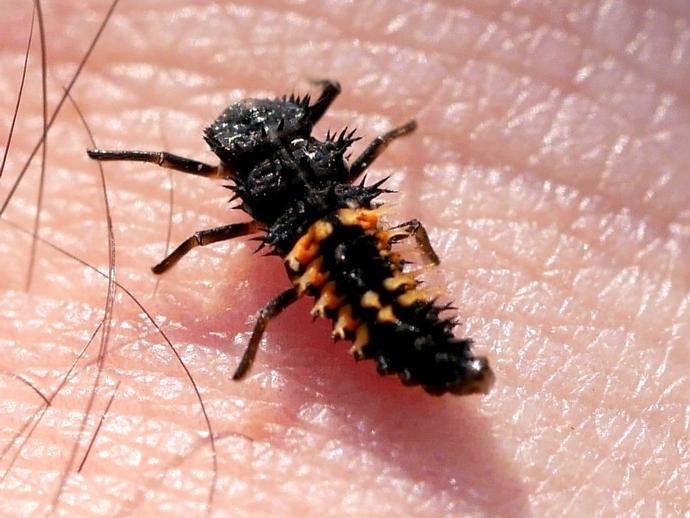
What a grotesque, hairy beast!
May 14, 2020
What a grotesque, hairy beast! And that thing crawling across my forearm ain't much to look at, either! When you see a critter like this, it might be hard to believe that it will grow up into one of the most beloved insects out there. But believe it or not, it's true: this is a ladybug larva! To be more specific, it's the larva of Harmonia axyridis, better known as the multicolored Asian ladybeetle. In some parts of America, it's also called the Halloween ladybeetle due to its tendency to invade homes around October in preparation for overwintering. Unfortunately, these ladybeetles are not native to the U.S.; it originally hails from eastern Asia. To make matters even more unfortunate, it wasn't an accidental ...
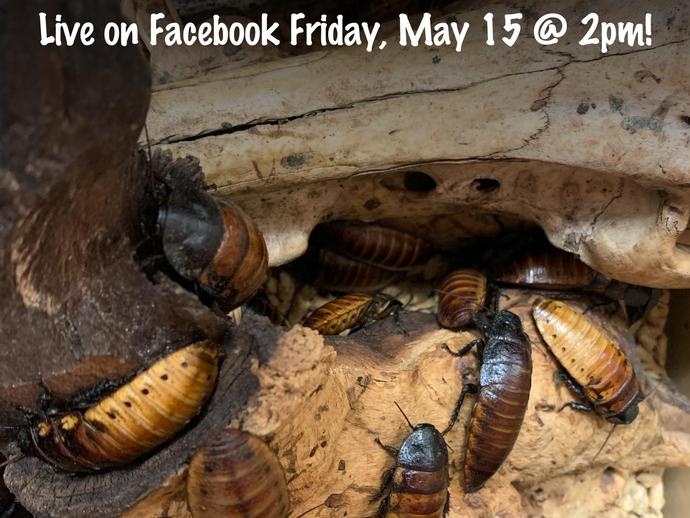
MADAGASCAR HISSING COCKROACHES Friday, May 15 at 2 p
May 14, 2020
MADAGASCAR HISSING COCKROACHES Friday, May 15 at 2 p.m. Live on the VMNH Facebook Page Join Museum Educator Kayla Lacy tomorrow at 2 p.m. live on Facebook, as she shows off the museum's resident Madagascar Hissing Cockroaches - one of the largest species of cockroach - and explains some of the characteristics that make these insects so special!
FANTASTIC FOOD WEBS! Tuesday, May 19 at 3 p
May 13, 2020
FANTASTIC FOOD WEBS! Tuesday, May 19 at 3 p.m. Live on the VMNH Facebook Page Join Museum Education Manager Christy Deatherage live on Facebook to explore food web basics and the connections between organisms and the environment! During the program, audiences will join Christy in exploring the predator-prey relationship, as she dissects owl pellets and explains the basic principles of food webs. Additionally, Christy will be showing-off one of the museum's Great Horned Owl specimens to highlight their adaptations, as well as museum specimens that represent common prey for these animals. Want to dissect pellets along with Christy? Though the museum remains closed, we will have a limited number of owl pellet packets ...
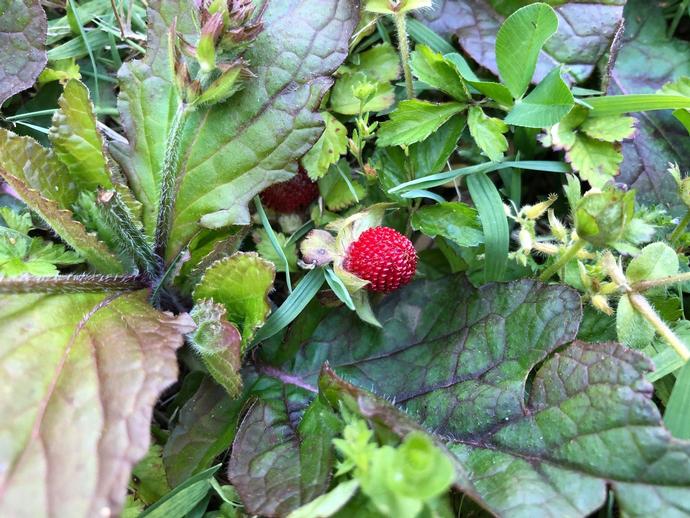
There's a very good chance that you have a patch of these growing in a shady spot in your lawn ...
May 13, 2020
There's a very good chance that you have a patch of these growing in a shady spot in your lawn right now. Although they're often called "wild strawberries," this is actually the mock strawberry Potentilla indica. This plant is native to eastern and southern Asia, but it has been introduced and naturalized in a number of places all over the world, including the U.S. Much like strawberries, this plant sends out stolons (an underground stem, popularly known as a "runner") and can spread pretty quickly. It produces yellow flowers around the middle of spring and continues to flower and produce fruit throughout the growing season. The fruit of the mock strawberry is actually safe for human consumption, but don't start ...
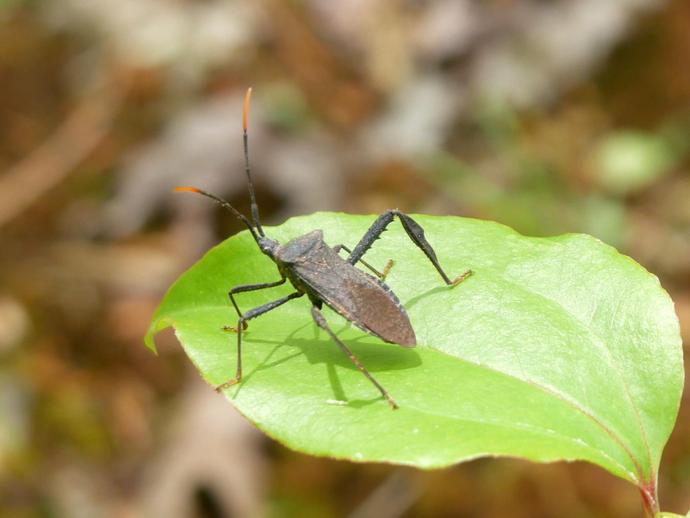
This insect with the orange highlights is Acanthocephala terminalis ...
May 12, 2020
This insect with the orange highlights is Acanthocephala terminalis, a leaf-footed bug belonging to the family Coreidae. Leaf-footed bugs get their name from the way the hind legs of many species in the family flare out and resemble leaves; it's less dramatic on this particular species, but you can still see how the rear legs are flared out a bit. Leaf-footed bugs generally feed on sap by injecting their needle-like mouthparts into the soft tissue of a plant. If you've ever grown squash, cucumbers, or pumpkins, you might have had to deal with "squash bugs," little tiny gray bugs that suck the juices from the plant and can cause damage in large numbers. These insects are Anasa tristis, which is a member of the same family ...
While at the museum last week, Dr
May 12, 2020
While at the museum last week, Dr. Nancy Moncrief, curator of mammals, recorded a short video tour of the museum's dermestarium - a setting at the museum where dermestid beetle colonies are used to clean the soft body parts from the bones of deceased animals. The resulting skeleton remains are kept in the museum's scientific collections and allow scientists to make connections between animals of today and their fossil ancestors.
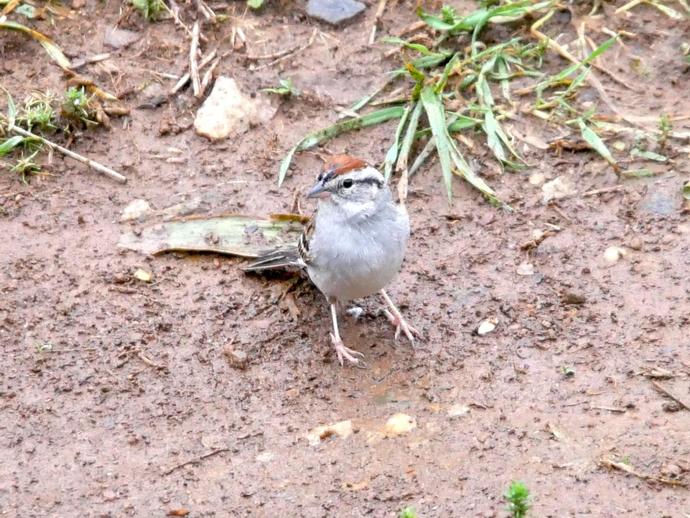
I've been trying to attract more birds within camera range by scattering birdseed in my front ...
May 11, 2020
I've been trying to attract more birds within camera range by scattering birdseed in my front yard (and also by hanging a suet feeder that the birds refuse to acknowledge in any way). One visitor that I've been seeing constantly is the chipping sparrow (Spizella passerina). Chipping sparrows are common passerine (perching) birds with an enormous range that includes most of North America. These birds can vary quite a bit throughout their range, and there are at least two subspecies that can be found out west. They often forage on the ground for seeds, insects, and spiders. If you'd like to attract some to your feeder, black oil sunflower seeds are a good bet! I must also share a wonderful description of the chipping ...
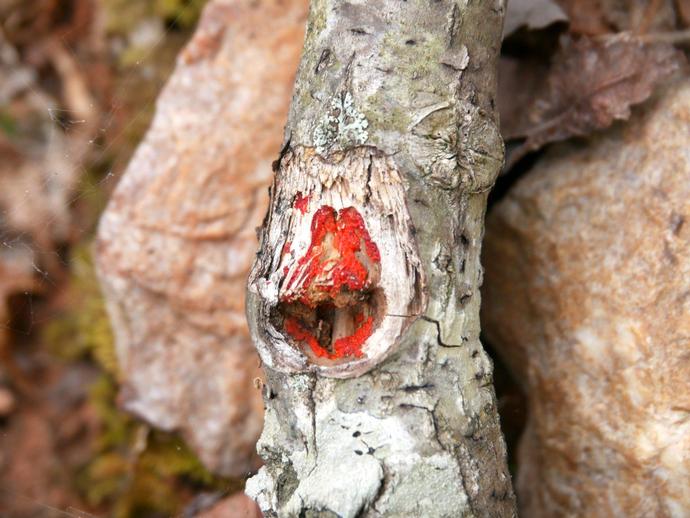
While I'm no expert on slime molds (nor have I ever claimed to be) ...
May 10, 2020
While I'm no expert on slime molds (nor have I ever claimed to be), I'm pretty sure this is the red raspberry slime mold Tubifera ferruginosa. Slime molds used to be considered fungi, but now they are grouped within the kingdom Protista, which serves as the taxonomic catch-all for everything that doesn't fit into any of the other kingdoms of life. This means they aren't animals, plants, or fungi. Other examples of protists include amoebas, diatoms and algae. Slime molds start out as single-celled amoeba-like critters that usually feed on bacteria. Once a slime mold cell mates with another slime mold cell, they begin to form a plasmodium, which is a mass of cellular material with multiple nuclei. It's all pretty confusing, ...
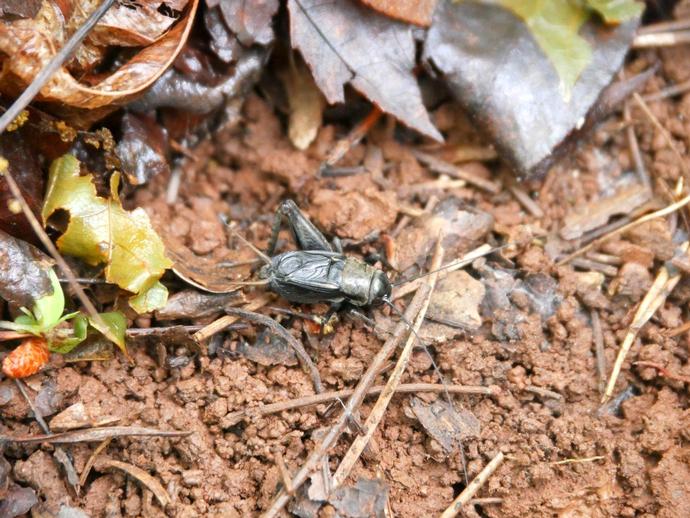
Did you know that you can use field crickets to tell the temperature?
May 9, 2020
Did you know that you can use field crickets to tell the temperature? When a piece of information appears in both Scientific American and the Farmer's Almanac, you know it must be true! Here's how to do it: When you hear a field cricket chirping outside one evening, go out and count the number of chirps it makes in 14 seconds. Write this number down, and then record the number of chirps in two more 14-second intervals. Add the three numbers together and then divide by three to get the average, and then add 40 to that number. The number you're left with should be pretty close to the temperature in Fahrenheit! The reason this works is that crickets are cold-blooded so they take on the temperature of their environment. Their ...
Virtual field trip around Lake Lanier, Martinsville VA
May 9, 2020
Virtual field trip around Lake Lanier, Martinsville VA
FANTASTIC FOOD WEBS! Tuesday, May 19 at 3 p
May 8, 2020
FANTASTIC FOOD WEBS! Tuesday, May 19 at 3 p.m. Live on the VMNH Facebook Page Join Museum Education Manager Christy Deatherage live on Facebook to explore food web basics and the connections between organisms and the environment! During the program, audiences will join Christy in exploring the predator-prey relationship, as she dissects owl pellets and explains the basic principles of food webs. Additionally, Christy will be showing-off one of the museum's Great Horned Owl specimens to highlight their adaptations, as well as museum specimens that represent common prey for these animals. Want to dissect pellets along with Christy? Though the museum remains closed, we will have a limited number of owl pellet packets ...
Museum Educator Kayla Lacy was at the museum today to feed the museum's resident ball python ...
May 8, 2020
Museum Educator Kayla Lacy was at the museum today to feed the museum's resident ball python, Reggie. Just like the previous week, Reggie chose not to eat again, but you might still learn a thing or two from Kayla, as she narrates while attempting to feed Reggie.
Archives
2026
2025
2024
2023
2022
2021
2020
2019
2018
2017
2016
2015
2014
2013
2012
2011
2010
2009
2008

Please Visit Us Soon
Hours:
Tuesday - Saturday: 10am - 4pm
Sunday: Noon to 4pm (Memorial Day Weekend through Labor Day Weekend only)
Monday: Closed
Admission:
$12 for ages 18-59
$6 for ages 3-17, seniors 60+, and college students
FREE for children under 3, museum members, members of ASTC Passport participating institutions, and EBT cardholders
My 4 year old son loves going to the museum. The exhibits are educational, interactive and kid-friendly.
”

 Hours & Admissions
Hours & Admissions Directions
Directions